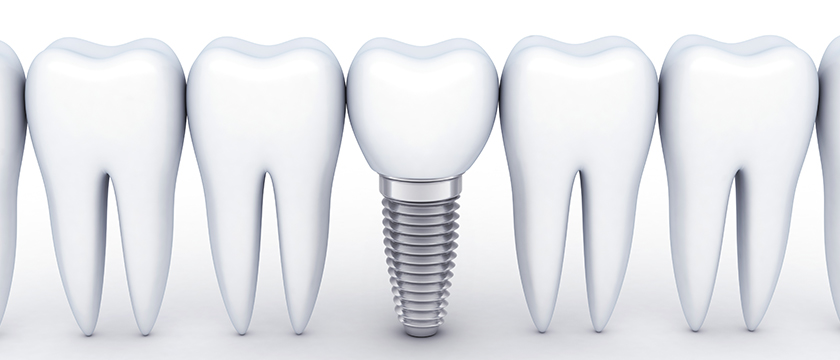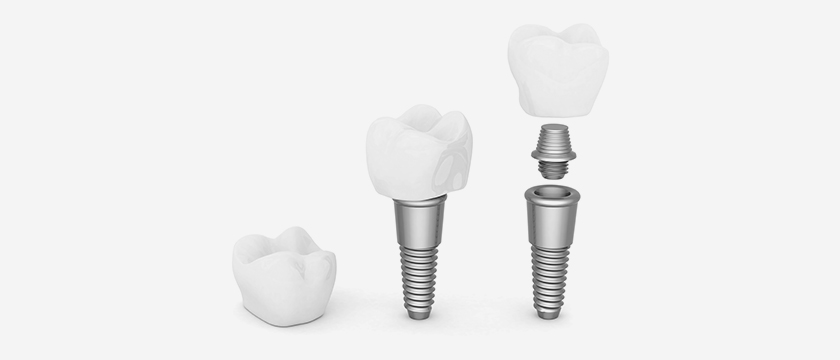What Are Digital Dental Implants?
Advances in digital implant technology have birthed some truly remarkable products and DDSS is proud to be at the forefront of this shift to more efficient dental technology.
Effectively digital dental implants provide you with all the benefits of traditional implants, without the corresponding risk.
What Are The Benefits Of Dental Implants
Dental implants maintain or restore the visual harmony in your facial contour, by filling it out properly. When you have missing teeth, your cheeks and sinuses do not appear as full.
Dental implants are replacing missing teeth at their roots, a result that can be achieved only by implants, and not by other tooth replacement methods. This gives a more natural feeling restoration that has the same strength as the rest of your natural teeth.
Dental implants also manage bone loss because they are replacing the roots of your teeth. Other tooth replacements can lead to further bone loss over time, because a bridge or dentures only replaces the aesthetic aspect of a missing tooth.
So all that sounds very promising – how could you possibly improve on the performance?
Well in order to place your new implants, your dental practitioner has to make an incision into your gum (in a straightforward procedure). In a more complex procedure this incision may be accessed again to add the abutment, or for a bone graft.
As soon as there is an incision, your risk factors increase. Because you are exposing bone and cutting into gum, there is bleeding and swelling, which increases your chances of developing an infection. Every time the incision is opened up (or if there is a trauma to the site) and stitched up again there is a risk of an infection. If you do not practice exemplary dental hygiene, there is also an elevated risk for infection.
What Are The Benefits Of DIO Dental Implants
Faster, more accurate placement
When your dental practitioner makes use of a digital dental implant system, these risk factors are more manageable. Through the use of digital imaging your dentist is given a very accurate position for the placement of your implants.
A 3D model of the jaw is created using digital implant technology, and from this the correct size and position for the space can be created, ensuring that nerves and sinuses are avoided.
Minimally invasive surgery
Rather than cutting into your gums, your dental practitioner will make clean key holes through your gum into your jawbone on the exact positions that have been mapped out.
Not making that incision means no swelling or bleeding, and thus a much lower chance of developing an infection. Your dental implants are placed directly into the holes and, unlike traditional implants, are accessible for the placement of the abutment later on. In most cases the abutment can be placed immediately after your implant has been embedded.

Get treatment faster
DIO dental implants reduce the amount of time you spend in your dentist’s chair. And the amount of time invested in the implant procedure overall. Thanks to computerised guidance, your planning session goes much quicker.
While a conventional dental implant surgery may take a few hours to complete, the DIO navi system enables your dental practitioner to place a single implant in just 20 minutes. This is a big deal because of the amount of time that is required between each stage of the implant process, any savings make a difference to the patient’s quality of life.
See a representation of what your finished smile will look like
Your dentist will use the 3D model to show you what your end result will look like. Together you can make adjustments until you are completely happy with the results.
Your Recovery is faster
You can expect some swelling, bruising, tenderness and bleeding at the site of your implant in the days following your surgery. In most cases the discomfort is mild and manageable.
It is essential that you practice very strict dental hygiene and follow your dentist’s instructions after surgery because you are susceptible to infection. Any side effects from the surgery should subside within seven to ten days after the procedure, and any symptoms that seem to be worse or don’t improve should be discussed immediately with your dentist.
Of course not having the incisions means your recovery time is a lot faster, and your comfort level is much higher.
So What Are The Dental Implant Risks You Should Be Aware Of?
Avoiding Infection
The biggest risk factor is infection at the site, a condition called peri-implantitis. With the use of digital dental technology this can be managed. You will still need to brush and floss twice daily and keep your mouth clean.
If you are a smoker, it is highly recommended that you do quit, as smokers do carry elevated dental implant risks.
Damage To Blood Vessels And Nerves
Injury to your soft tissue, nerves, blood vessels and other teeth during a surgical procedure is another risk factor. The mouth is quite small and without the assistance of digital mapping, the possibility of making a human error exists.

Allergic Reaction To The Implant
In very rare cases a patient may have an allergic reaction to the metals of the implants. Most implants are made from titanium nickel alloys, and in a small proportion of people this can cause a reaction characterised by a burning sensation in the mouth.
Damage To The Sinuses
Placement of the implant too close to, or protruding into, the sinus cavity is another risk factor that can be avoided through digital implant technology.
Failure To Integrate
In very rare cases, the dental implant does not integrate fully with the jaw bone. The integration of the implant is known as osseo-integration. This can happen because your jaw is too thin, because the implant is loose or incorrectly positioned, due to an infection or because your body rejects it.
Rejection of an implant is typically caused by an autoimmune disease. It often affects patients with type I diabetes, rheumatoid arthritis, multiple sclerosis and celiac disease.
By performing a thorough medical assessment, you and your dental practitioner can manage these risk factors before you go ahead with treatment.
By making use of a high quality dental implant system that utilises biocompatible materials, you can encourage this process.
Managing Dental Implant Risk
In summary, you can take a proactive stance to manage your risk of implant failure by:
- Choosing a skilled and experienced dental practitioner to perform the process for you. This will ensure that your eligibility is thoroughly checked from the offset.
- Investing in a high quality implant system that offers a guarantee is another risk management strategy because in the event that your implant does fail, you would like to have a second chance to try again.
- Using digital dental implant technology if you would like a faster, minimally invasive procedure.
To find out more about the benefits of DIO dental implants it’s always best to speak to a professional. Contact the team at DDSS today:
Sydney CBD: (02) 8294 5812
Gosford: (02) 8294 8656






